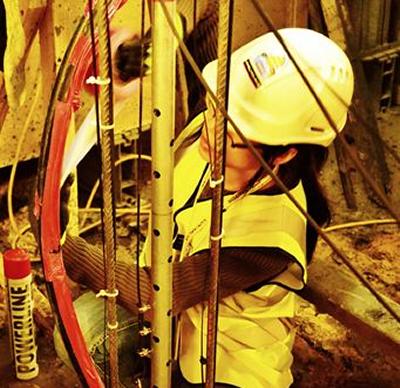Research project: Foundations as an energy source
How to access the heat beneath our feet by using building foundations to harvest thermal energy.
How to access the heat beneath our feet by using building foundations to harvest thermal energy.

Around 50% of the UK and EU energy consumption is taken up by space heating of buildings. This excludes air conditioning, the use of which is rapidly increasing. Yet a major opportunity to reduce the heating and cooling energy required by buildings lies just beneath our feet. The ground is a relatively constant temperature throughout the year. This means that it is cooler than the outside air temperature in summer and warmer that it in winter. Consequently this temperature difference can be exploited by using a ground source heat pump system to extract or inject heat into the ground.

All such systems require a heat exchanger to be constructed within the ground. A recent innovation is the use of building foundations and other underground structures in the function of heat exchangers as well as providing structural support to the overlying civil engineering structure. However, there is an absence of standard analysis methods for foundation heat exchangers.
Research at the University of Southampton is working to develop new analysis methods and guidance for design input parameters so that the energy efficiency of ground heat exchangers can be maximised. Specific research topics include:


Current research is proceeding by a combination of laboratory testing of materials, in situ monitoring of operational and test piles, and development of new analytical and numerical solutions. For more information about this project please contact Dr Fleur Loveridge.
Early results from our work have been included in the ground breaking Ground Source Heat Pump Association Thermal Pile Standard, with further research updates presented at the Ground Heat Source Pump Association regular Technical Seminar series.
This project is supported by the following awards:
Geomechanics and environmental geotechnics